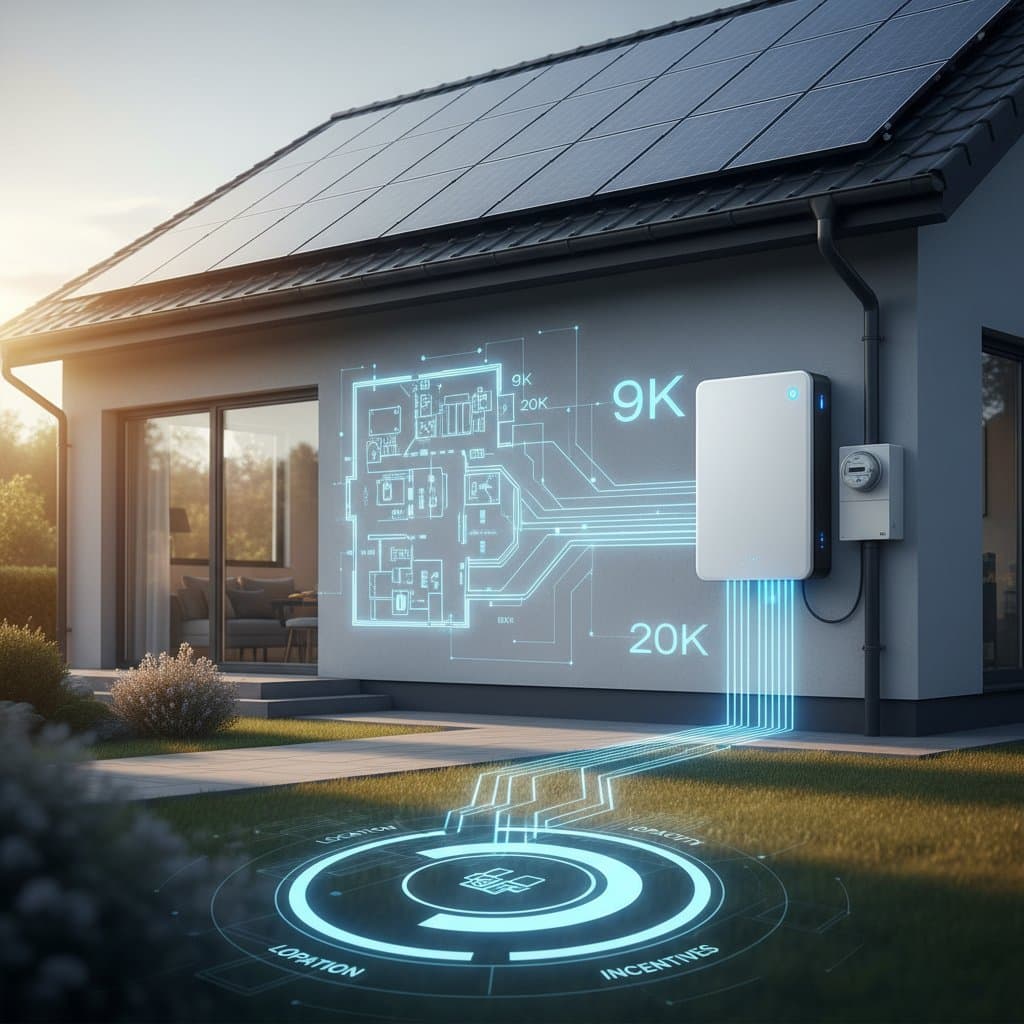What Homeowners Pay for Solar Batteries in 2025
Homeowners increasingly turn to solar batteries for reliable backup power and enhanced energy independence as renewable energy adoption grows. The actual cost of these systems hinges on factors like location, storage capacity, and installation requirements. Buyers who grasp these elements can make decisions that align budget constraints with desired performance and enduring benefits.
Fundamentals of Solar Battery Costs
Nationwide, a home solar battery system installed alongside solar panels averages between nine thousand and eighteen thousand dollars. For homes with existing panels, standalone systems range from ten thousand to twenty thousand dollars, varying by battery capacity and manufacturer. These figures encompass hardware, labor, permits, and necessary electrical modifications.
Variations by Region
Costs differ across regions due to differences in labor rates, available incentives, and local supply dynamics. In urban coastal areas with elevated labor expenses, prices tend toward the higher end of the spectrum. Rural locations might offset lower labor costs with increased shipping fees, resulting in comparable totals. States offering robust incentives can lower effective costs by as much as thirty percent via tax credits and rebates, based on insights from the Solar Energy Industries Association.
Impacts from Seasons and Economy
Installation expenses shift with seasonal demand; warmer periods bring higher sunlight exposure and thus greater interest, prompting contractors to raise rates. Economic conditions, including lithium supply disruptions and production expenses, also play a role. Rising material costs lead manufacturers to update prices swiftly, which homeowners ultimately feel in their quotes.
Common Pricing Approaches
Installers apply diverse pricing strategies based on the project's scale and nature.
Hourly Labor Compared to Fixed Quotes
Smaller firms sometimes bill hourly for labor, typically at rates of eighty to one hundred twenty dollars per hour. Established companies favor fixed fees that cover equipment, setup, and warranties. This fixed approach shields homeowners from surprise labor bills and prevails in integrated solar-plus-storage projects.
Pricing per Capacity or Full Project
Systems often carry a price tag of eight hundred to one thousand dollars per kilowatt-hour of storage. A ten kilowatt-hour unit, for instance, might total ten thousand dollars prior to incentives. Full-project pricing accounts for wiring, monitoring equipment, and safety features in comprehensive setups.
Bundled Packages and Subscription Options
Providers frequently bundle panels, inverters, and batteries to trim costs by five to ten percent over individual buys. Subscription plans, involving monthly payments for battery access or system leasing, gain traction in select markets. Such arrangements ease initial outlays while extending expenses over time.
Service Levels and Associated Costs
Entry-Level Systems
Basic units with five kilowatt-hour capacity range from four thousand to seven thousand dollars. These suffice for powering essentials like lights, refrigerators, and minor devices during brief power interruptions.
Mid-Tier Systems
Standard options offering ten to twelve kilowatt-hours cost ten thousand to fifteen thousand dollars. They meet the needs of typical households for evening energy demands or several hours of outage support.
Advanced Systems
Premium batteries exceeding fifteen kilowatt-hours begin at sixteen thousand dollars and may surpass twenty-five thousand dollars including installation. These handle demands of spacious homes or prolonged off-grid scenarios.
Custom Installations
Tailored setups for smart homes, full-property backup, or commercial applications incorporate sophisticated monitoring and vehicle charger integration. Costs for these bespoke projects frequently exceed thirty thousand dollars after accounting for design and customization.
Factors That Shape Pricing
Several quantifiable elements determine the overall expense:
- Capacity: Greater storage volumes increase upfront costs yet improve value per kilowatt-hour over time.
- Installation Complexity: Arrangements with multiple batteries or ties to current solar arrays extend labor and time requirements.
- Project Duration: Routine setups span one to three days; those needing electrical overhauls or outdated wiring demand more.
- Battery Technology: Lithium-ion models lead for their efficiency and durability, though emerging sodium-ion variants promise reduced pricing.
Additional Services and Fees
Electrical Modifications
Aging properties often require panel upgrades or rewiring, adding one thousand to three thousand dollars. Contractors evaluate load capacities to guarantee safety and regulatory adherence.
Performance Monitoring
Apps and devices for real-time battery oversight add two hundred to five hundred dollars. These tools facilitate upkeep and energy optimization.
Warranty Extensions
Standard ten-year coverage comes included, but longer terms cost five hundred to one thousand dollars extra. This suits owners committed to extended use.
Accelerated Scheduling
Priority or off-hour installations raise fees by ten to fifteen percent, subject to contractor schedules.
Selecting a Dependable Installer
A reputable provider ensures fair pricing and solid results. Companies like Sunrun, Tesla Energy, and Enphase Energy uphold national benchmarks for safety and efficiency. Obtain several estimates, confirm credentials, and scrutinize warranty conditions. Energy experts advise checking reviews and local incentives prior to commitment.
Securing Long-Term Energy Benefits
A solar battery purchase merges fiscal strategy with environmental aims. Substantial initial investments yield returns via reduced bills, outage protection, and grid contribution opportunities. Homeowners who assess incentives, match capacities to needs, and scrutinize proposals secure optimal cost-performance ratios. This thorough approach delivers sustained reliability and value for future energy needs.





